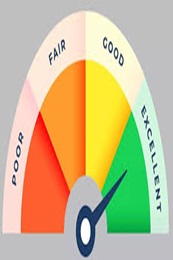Understanding How Banks Determine ATM Transaction Limits
April 15, 2025

We all rely on ATMs for quick and convenient access to cash. But have you ever wondered why there are limits on the amount you can withdraw in one go? Understanding the factors that determine these limits can help you manage your finances better and make the most of your banking experience.
In this article, we will demystify ATM transaction limits, explore the withdrawal policies set by banks, and shed light on the bank rules that govern these limits.
Types of ATM Transaction Limits
When it comes to ATM transactions, banks impose different types of limits to ensure security and prevent misuse. Let's take a closer look at each type:
a. Daily Limit: This refers to the maximum limit of cash you can withdraw from an ATM in a single day. Banks typically set this limit to safeguard their customers' accounts from unauthorised access or fraudulent activities.
b. Per Transaction Limit: This limit restricts the amount you can withdraw in a single transaction at an ATM. It is usually lower than the daily limit and aims to minimise financial loss in case of theft or card skimming incidents.
c. Cash Deposit Limit: In addition to withdrawal limits, banks also impose limits on cash deposits at ATMs. This ensures that large amounts of cash are not deposited without proper scrutiny.
Factors Influencing ATM Transaction Limits
Banks consider several factors when determining ATM limits for their customers. These factors include:
a. Account Type: The type of account you hold with the bank can impact your ATM limits. Different types of accounts may have varying withdrawal limits based on factors such as your average account balance, account activity, and banking relationship.
b. Customer Profile: Banks set specific rules for transaction limits also take into account your transaction history, creditworthiness, and overall banking behaviour when setting ATM transaction limits. For example, if you have a long-standing relationship with the bank and maintain a good credit score, you may be eligible for higher withdrawal limits.
c. Security Considerations: ATM transaction limits are designed to protect customers from fraud and unauthorised access to their accounts. Banks continuously monitor security threats and adjust limits accordingly to mitigate risks.
d. Regulatory Guidelines: Bank rules must adhere to regulatory guidelines set by the Reserve Bank of India (RBI) regarding ATM limits. These guidelines ensure uniformity across banks and maintain the safety and integrity of the banking system.
Tips for Managing ATM Transaction Limits
To make the most of your ATM transactions and manage your finances effectively, consider the following tips:
a. Plan Your Cash Needs: Take stock of your daily expenses and plan your cash withdrawals accordingly. By budgeting your cash requirements for each day, you can reduce your trips to the ATM and optimise your withdrawals.
b. Utilise Online Banking: Instead of relying solely on cash withdrawals, leverage online banking services to make payments and transfer funds digitally. This can help reduce your reliance on physical cash and allow you to stay within transaction limits.
c. Opt for Higher Daily Limits: If you frequently require larger amounts of cash, consider opting for an account that offers higher daily withdrawal limits. Speak to your bank about upgrading your account or explore different account options that better suit your needs.
d. Be Mindful of Fees: Keep an eye on transaction fees associated with ATM withdrawals. Some banks may charge fees for exceeding transaction limits or using ATMs not affiliated with their network. Understanding these fees can help you minimise unnecessary charges.
Final Thoughts
Understanding how banks determine ATM transaction limit is essential for managing your finances effectively and ensuring a smooth banking experience. By considering factors such as account type, customer profile, security considerations, and regulatory guidelines, banks set limits that protect customers while providing convenient access to cash.
Enjoy easy banking with Ujjivan Small Finance Bank. Save more with our high-interest Savings Account and Deposit products. Need cash for your business or personal needs? Apply for MSME Loans or Micro Loans with us – we offer competitive rates and quick disbursal. We also offer vehicle loans and home loans tailored for your unique requirements. Experience a smooth banking journey with Ujjivan SFB!
FAQs
1. Are there different bank rules for ATM transaction for domestic and international withdrawals?
Yes, bank rules are often separate for domestic and international ATM transactions. Withdrawal limits for international transactions maybe lower due to higher associated risks.
2. What are the ATM cash withdrawal policies set by banks?
Banks set withdrawal policies to ensure the security of customer accounts and minimise financial loss in case of theft or fraud. These policies include daily limits, per transaction limits, and cash deposit limits.
3. Why do banks impose ATM transaction limits?
ATM limits are imposed to protect customers from unauthorised access to their accounts and minimise financial loss in case of theft or fraudulent activities.
4. Can I change my ATM transaction limit?
Yes, some banks allow customers to request temporary or permanent increases in their ATM transaction limits.
5. How can I check my current ATM transaction limit?
You can check your current ATM transaction limit by logging into your online banking portal or contacting your bank's customer service helpline.
6. Do different types of accounts have different ATM transaction limits?
Yes, different types of accounts may have varying ATM limits based on factors such as average account balance, banking relationship, and account activity.
7. Are ATM cash withdrawal policies uniform across the banking sector?
No, ATM cash withdrawal policies may differ from bank to bank based on type of account etc.
8. Are all ATM related bank rules set by the RBI?
Not really! Many ATM related bank rules are set by the banks themselves.
9. Can I withdraw more cash from an ATM by making multiple transactions?
Yes, you can make multiple transactions at an ATM to withdraw larger amounts of cash within the daily limit set by your bank.
10. How often do banks revise their ATM withdrawal policies?
Banks may periodically revise their withdrawal policies to align with changing customer needs and security requirements.
11. What should I do if I require more cash than my daily ATM withdrawal limit allows?
You can consider alternative options such as visiting your bank branch to request a temporary limit increase or using online banking facilities for fund transfers.
Latest Blogs

Telangana Housing Board & KPHB Colony: A Guide to Affordable Urban Housing in Hyderabad
March 14, 2025
As Telangana continues its rapid urbanisation journey, two key housing entities—Telangana Housing Board (THB) and Kukatpally Housing Board Colony (KPHB)—have played critical roles in shaping the state's real estate ecosystem.

Does Checking CIBIL Score Frequently Lower Your Credit Points?
April 07, 2025
Imagine you're planning to apply for a home loan, a credit card, or even a car loan. Naturally, you want to ensure your CIBIL score is in good shape before proceeding.

Explained: Can NRIs Buy an Agricultural Land in India?
April 03, 2025
Real estate investment is often a top priority for Non-Resident Indians (NRIs) looking to retain strong financial ties to India.

How to Improve Your CIBIL Score from 600 to 750: A Step-by-Step Guide
April 02, 2025
Your CIBIL score is like your financial reputation—banks check it before approving loans or credit cards. If your score is hovering around 600, you might face difficulties in securing credit or may get loans with higher interest rates.

What Happens When You Leave Your Savings Account Unused?
April 01, 2025
Imagine waking up one day to find that your hard-earned money is locked away and inaccessible. Sounds stressful, right? This is precisely what happens when you leave your Savings Account inactive for too long.





